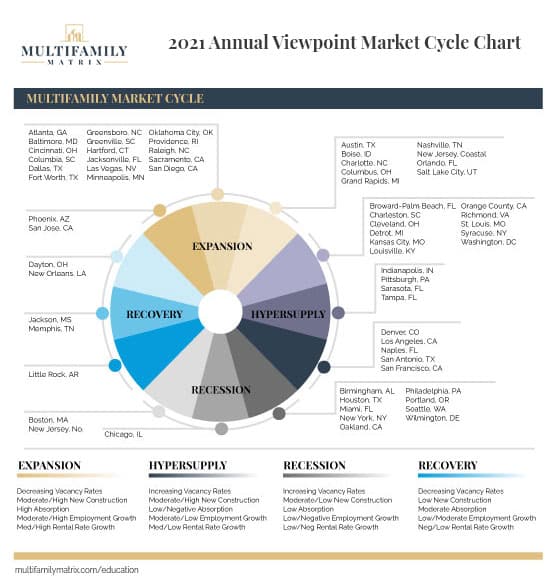As a real estate investor, you’re always on the lookout for top-notch investment opportunities. Part of successfully finding investment properties is buying when the timing is right.
Purchasing a little too soon or selling a little too late can easily lead to a poor investment. However, when you understand the 4 phases of the real estate cycle, you can help ensure you’re ready and able to invest at the right time.
The phases of the real estate cycle help investors understand the current state of the real estate market. As each stage is accompanied by certain buying and selling patterns, investors are able to strategize their own buying and releasing of properties. In fact, knowing the 4 phases can help investors craft an investment strategy that helps to ensure they buy and sell their properties at ideal times.
Watching the real estate market and strategizing your investments can help you make an educated guess encompassing all of the essential details of a certain investment. You will be able to determine the best time to invest, how long you are likely to keep the property, as well as how and when you should sell.
The 4 Phases of a Real Estate Cycle
Understanding the 4 phases of the real estate cycle is key for developing an effective investment strategy. The 4 phases are the recovery phase, the expansion phase, the hyper supply phase, and the recession phase.

- Recovery Phase
The recovery phase is the time when the real estate market is at the lowest point. This is when there are numerous foreclosures and home vacancies, with fewer people buying. During the recovery phase there are often an abundance of construction projects as developers seek to get ahead of the inevitable boom at the end of recovery.
This can be a great time for investors to buy properties at lower prices. However, they’ll need to be ready to take the downtime after buying to make renovations and repairs, keeping the property for longer than usual. Once the market begins to bounce back, the house will be all ready to rent out or sell.
- Expansion Phase
The expansion phase is the time when the recovery phase is ending. The market expands and prices go up. During this time, home vacancies typically decrease and there is usually an increase in people seeking rental properties. Construction projects that began in the recovery phase are being finished and even more are just beginning.
There tends to be a balance of supply and demand for home purchase and home rentals during this phase. Investors who are seeking to purchase a property at a lower cost and make repairs often find an abundant supply of options during this phase.
As rental prices increase, the expansion phase is a great time for investors to rent out properties at a higher-than-normal price. Taking the time to prepare a property for renting is a great use of time during expansion.
- Hyper Supply Phase
During the expansion phase, lots of new developments are built and many properties are renovated. This leads to an excess supply of properties. Often during this time there are negative happenings in the economy, leading to less of a demand for buying and renting properties. When that happens, rent declines and more homes become vacant.
When the hyper supply phase first starts, some investors will jump on selling their properties to try and get on top of reduced home values and the difficulties in the market. Other investors may choose to stick with their properties, especially those that have many occupants and long leases.
If an investor chooses to keep their properties during the hyper supply phase, they must be committed for the long haul. This phase has many twists and turns and can often last for an extended period of time.
- Recession Phase
The recession phase comes when there is way more real estate available than people looking to buy or rent. It is a bit of a darker market where home prices are reduced and home construction ceases. During this time, homes are more affordable for buyers, sellers are more willing to make concessions for the buyers, and rental prices tend to drop.
For investors, the recession phase is a great time to buy. Housing prices are at their low and there’s plenty of time to fix up and ready a property to sell or rent when the market turns.
In Conclusion
The 4 phases of the real estate market are a great way to create your investment strategy. You’ll be able to understand the ebbs and flows happening in real estate in order to make the smartest investments.
The Multifamily Matrix can help you understand the market and how it will affect your investing. Understanding the cycle is one thing; learning to intentionally follow it for an effective investment strategy, is another.



